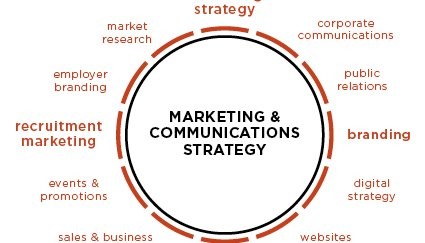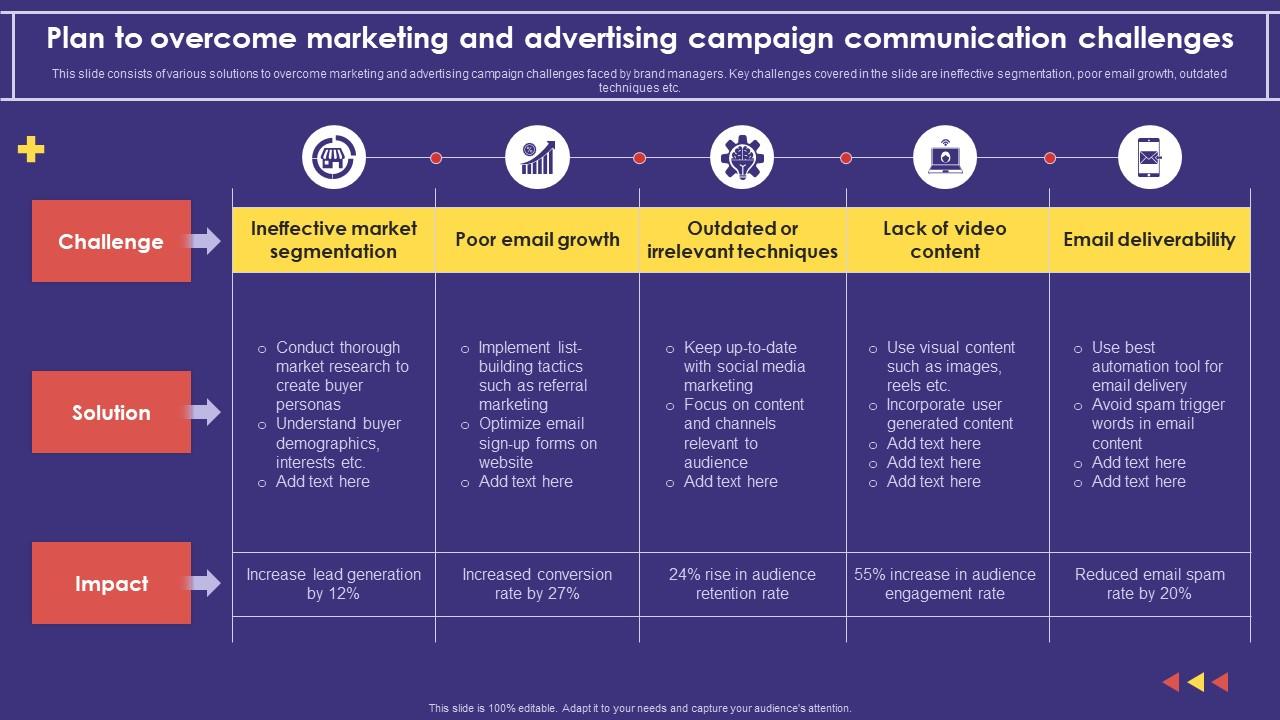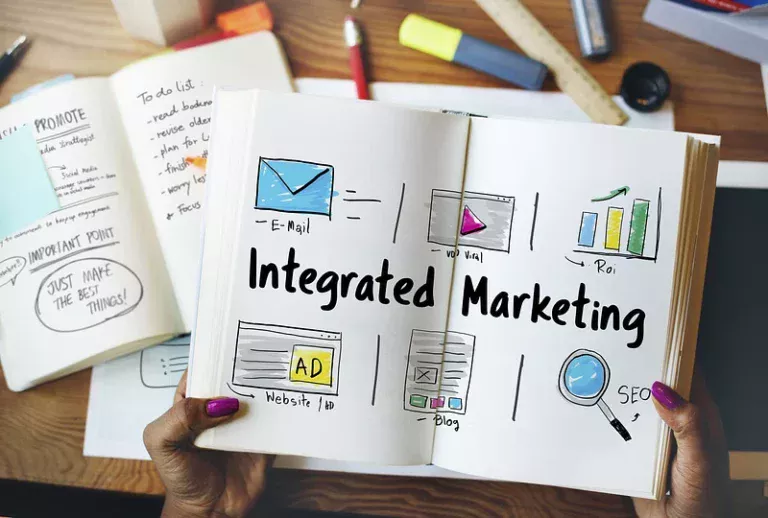What Are Marketing Communication Tactics
Are you looking to amplify your brand’s voice and connect with your target audience effectively? In the vast world of marketing, communication tactics hold the key to successful brand messaging and engagement. From traditional methods to cutting-edge digital strategies, marketing communication tactics play a pivotal role in capturing attention, driving conversions, and building lasting relationships with customers.
In this comprehensive guide, we will explore the diverse landscape of marketing communication tactics and uncover the secrets to crafting compelling and impactful messages that resonate with your audience. Let’s dive in and discover the tools that will empower your brand to stand out in the crowded marketplace.
Understanding Marketing Communication
Marketing communication is a crucial aspect of any successful business strategy. It refers to the process of conveying messages and information to target audiences, with the ultimate goal of promoting products, services, or brands. By utilizing various channels and techniques, marketing communication aims to create awareness, generate interest, and ultimately persuade potential customers to take action.
What is Marketing Communication?

At its core, marketing communication involves the strategic use of communication tools to deliver consistent and persuasive messages about a company’s offerings. These tools can include advertising, public relations, social media, content marketing, email campaigns, and more. The key is to tailor the messages to resonate with the intended audience and align them with the overall marketing objectives.
Importance of Effective Marketing Communication
Effective marketing communication is vital for several reasons. Firstly, it helps establish a strong brand identity and presence in the market. By consistently communicating the brand’s values and unique selling propositions, businesses can differentiate themselves from competitors and build trust with customers.
Secondly, marketing communication plays a significant role in influencing consumer behavior. A well-crafted message can evoke emotions, address pain points, and create a desire for the product or service, ultimately driving sales and conversions.
Furthermore, in today’s competitive landscape, where consumers are exposed to a barrage of information, effective communication ensures that a brand’s message cuts through the noise and reaches the right audience at the right time.
Role of Marketing Communication in Business Success
The success of a business often hinges on its ability to effectively communicate with its target audience. Marketing communication serves as a bridge between the company and its customers, allowing for a two-way exchange of information.
By understanding customer needs, preferences, and pain points, businesses can tailor their marketing messages and strategies accordingly. This not only leads to increased brand loyalty and customer satisfaction but also enables businesses to make data-driven decisions for continuous improvement.
Furthermore, marketing communication is an essential element in launching new products or services. Through pre-launch teasers, engaging content, and well-timed announcements, businesses can create anticipation and excitement, driving initial sales and word-of-mouth referrals.
The Evolving Landscape of Marketing Communication
In recent years, the field of marketing communication has undergone significant transformations, largely due to advancements in technology and shifts in consumer behavior. Understanding these changes is critical for businesses to stay relevant and effective in their marketing efforts.
Traditional vs. Digital Marketing Communication
Traditional marketing communication, which includes mediums like print advertisements, TV commercials, and direct mail, was once the primary means of reaching audiences. While it still holds value in certain industries, digital marketing communication has emerged as the dominant force.
Digital marketing communication leverages the power of the internet and technology to reach vast and targeted audiences through channels such as social media, search engines, email, and websites. The advantage of digital marketing lies in its ability to measure and track results, allowing businesses to optimize their campaigns in real-time and achieve higher ROI.
Impact of Technology and Social Media
Technology has revolutionized how businesses interact with their customers. Social media platforms have become powerful tools for building brand awareness, engaging with audiences, and fostering meaningful relationships.
Moreover, advancements in data analytics and artificial intelligence have enabled businesses to gather valuable insights into their customer’s preferences and behaviors. This data-driven approach allows for more personalized and relevant marketing communication, leading to better customer experiences.
Consumer Behavior and its Influence on Communication Strategies
As technology continues to shape consumer behavior, businesses must adapt their communication strategies accordingly. Consumers today are more informed, empowered, and expect a seamless experience across different channels.
Therefore, businesses need to adopt an integrated marketing communication approach that ensures consistent messaging and branding across both traditional and digital platforms. Understanding the customer journey and touchpoints throughout the buying process is crucial for delivering the right message at the right time, increasing the chances of conversion.
In conclusion, marketing communication is a dynamic and indispensable component of any successful business strategy. By understanding its definition, importance, and role in achieving business success, as well as keeping up with the evolving landscape, businesses can effectively engage with their target audiences and achieve their marketing goals.
Key Marketing Communication Tactics

Marketing communication tactics are essential for reaching and engaging the target audience, building brand awareness, and promoting products or services effectively. Here are some key marketing communication tactics that businesses commonly use:
1. Content Marketing: Engaging Your Audience
Content marketing is a powerful strategy for attracting and engaging audiences. By providing valuable and relevant content, businesses can establish themselves as industry leaders and build trust with their target customers.
Crafting Compelling Content for Different Channels
- Identifying the Content Needs of Your Target Audience
- Creating Diverse Content Formats: Blog Posts, Infographics, Videos, etc.
- Tailoring Content for Different Social Media Platforms
- Incorporating Visuals and Multimedia to Enhance Engagement
Leveraging Storytelling to Connect with Customers
- Tapping into the Emotional Aspect of Storytelling
- Developing Brand Narratives that Resonate with the Audience
- Using Customer Success Stories and Testimonials
- Aligning Stories with Brand Values and Objectives
Measuring Content Marketing Success: Metrics to Monitor
- Analyzing Website Traffic and Engagement
- Tracking Conversion Rates and Lead Generation
- Monitoring Social Media Metrics: Likes, Shares, and Comments
- Assessing Content Performance with Google Analytics and Other Tools
2. Search Engine Optimization (SEO): Getting Found Online
Search Engine Optimization (SEO) is the process of optimizing your website and content to rank higher in search engine results. A strong SEO strategy increases visibility and organic traffic to your site.
Understanding the Basics of SEO
- On-Page SEO: Optimizing Title Tags, Meta Descriptions, and Content
- Off-Page SEO: Building Backlinks and Citations -Importance of Mobile-Friendly Websites and Page Load Speed
- Navigating Google Algorithm Updates and Ranking Factors
On-Page and Off-Page SEO Techniques
- Conducting Keyword Research: Identifying Relevant Keywords and Long-Tail Phrases
- Implementing Keyword Optimization in Content and Metadata
- Building High-Quality Backlinks from Authority Websites
- Engaging in Guest Posting and Content Outreach
Keyword Research and Implementation Strategies
- Utilizing Keyword Research Tools: Google Keyword Planner, SEMrush, etc.
- Targeting High-Intent Keywords for Conversions
- Optimizing Content for Featured Snippets and Voice Search
- Evaluating Competitor Keywords and Identifying Opportunities
3. Social Media Marketing: Building Your Brand’s Presence
Social media marketing is a vital component of modern marketing communication. It allows businesses to connect with their audience, build brand awareness, and foster customer loyalty.
Identifying the Right Social Media Platforms
- Understanding Your Target Audience and Their Social Media Habits
- Selecting Social Media Channels Based on Your Business Objectives
- Creating a Consistent Brand Voice Across Platforms
- Integrating Social Media with Other Marketing Efforts
Creating Engaging Social Media Content
- Crafting Captivating Visuals and Graphics
- Writing Engaging Captions and Calls-to-Action (CTAs)
- Leveraging User-Generated Content and Customer Stories
- Engaging with Followers and Responding to Comments
Community Building and Customer Engagement
- Building a Loyal and Active Social Media Community
- Running Social Media Contests and Giveaways
- Using Influencers and Brand Advocates to Amplify Reach
- Monitoring Social Media Analytics and Gathering Insights
4. Email Marketing: Direct Communication with Your Audience
Email marketing remains an effective way to directly communicate with your audience and nurture leads. A well-executed email marketing strategy can drive conversions and customer loyalty.
Building and Growing Your Email List
- Implementing Opt-In Strategies: Pop-Ups, Lead Magnets, and Webinars
- Segmenting Email Lists for Targeted Messaging
- Maintaining a Clean and Engaged Subscriber Base
- Avoiding Spam Traps and Improving Deliverability
Crafting Effective Email Campaigns
- Personalization and Customization for Higher Engagement
- Creating Compelling Subject Lines to Improve Open Rates
- Designing Mobile-Friendly and Responsive Emails
- A/B Testing and Optimizing Email Content and CTAs
Personalization and Segmentation for Better Results
- Using Customer Data for Personalized Content Recommendations
- Tailoring Email Campaigns Based on Customer Behavior
- Sending Relevant Offers and Promotions
- Automating Email Flows for Efficient Communication
5. Influencer Marketing: Leveraging Industry Leaders
Influencer marketing involves collaborating with individuals who have a significant following and influence in your target market. It allows businesses to tap into a wider audience and gain credibility.
Finding the Right Influencers for Your Brand
- Identifying Influencers Relevant to Your Niche and Industry
- Evaluating Influencer Reach, Engagement, and Authenticity
- Establishing Mutually Beneficial Partnerships
Collaboration and Partnerships
- Crafting Creative Campaigns with Influencers
- Co-Creating Content and Promotions -Negotiating Compensation and Deliverables
Measuring ROI and Effectiveness of Influencer Campaigns
- Setting Clear Goals and Key Performance Indicators (KPIs)
- Tracking Website Traffic, Conversions, and Sales from Influencer Referrals
- Assessing Social Media Metrics and Reach
- Calculating the Return on Investment (ROI) for Influencer Marketing Efforts
By incorporating these key marketing communication tactics into your overall strategy, you can effectively reach and engage your target audience, ultimately driving business growth and success.
Integrating Traditional and Digital Marketing Communication

Integrating traditional and digital marketing communication is a powerful strategy that allows businesses to leverage the strengths of both approaches, reach a broader audience, and achieve more cohesive and effective marketing campaigns.
1. The Power of Integrated Marketing Communication (IMC)
Integrated Marketing Communication (IMC) is a strategic approach that combines various marketing communication channels to deliver a consistent and unified message to the target audience. By integrating traditional and digital channels, businesses can maximize their reach and impact potential customers.
Definition and Benefits of IMC
- Understanding the Concept of IMC and its Role in Marketing Strategy
- Advantages of Using IMC: Increased Brand Visibility, Higher Engagement, and Customer Loyalty
- Leveraging IMC to Create a Seamless Customer Experience
Combining Traditional and Digital Channels
- Recognizing the Value of Both Traditional and Digital Marketing
- Aligning Traditional and Digital Efforts for a Holistic Approach
- Identifying Complementary Channels for Cross-Platform Promotion
Creating a Unified Brand Message
- Crafting Consistent Messaging Across all Marketing Channels
- Maintaining Brand Voice and Identity in Traditional and Digital Content
- Ensuring Coherence and Cohesion in Brand Storytelling
2. Utilizing Offline Marketing Channels
Offline marketing channels continue to be effective in reaching certain demographics and creating a tangible brand presence. Here’s how businesses can leverage these traditional methods:
Print Advertising: Magazines, Newspapers, and Brochures
- Identifying the Right Print Media for Target Audiences
- Designing Engaging Print Advertisements
- Utilizing Brochures for In-Person Promotion and Events
Television and Radio Advertising
- Understanding the Reach and Impact of Television and Radio
- Creating Engaging Television Commercials and Radio Spots
- Targeting Specific Time Slots and Demographics
Direct Mail and Outdoor Advertising
- Leveraging Direct Mail for Personalized Customer Outreach
- Utilizing Outdoor Advertising for Local Brand Awareness
- Measuring the Effectiveness of Offline Marketing Efforts
3. Bridging the Gap with Online Marketing Channels
Digital marketing channels offer vast opportunities for businesses to connect with their target audience online. Here’s how to make the most of these channels:
Maximizing Website Potential
- Designing a User-Friendly and Responsive Website
- Optimizing Website Content for Search Engines (SEO)
- Utilizing Landing Pages for Lead Generation and Conversion
Exploring Display and Banner Ads
- Understanding the Role of Display and Banner Ads in Digital Marketing
- Targeting the Right Audience with Programmatic Advertising
- Designing Eye-Catching and Click-Worthy Display Ads
Incorporating Video Marketing
- Harnessing the Power of Video Content for Brand Engagement
- Creating Compelling Video Content for Social Media and Websites
- Utilizing Video Ads for Increased Conversion and Brand Awareness
By integrating both traditional and digital marketing communication strategies, businesses can create a cohesive and impactful brand presence. The combination of offline and online efforts allows companies to effectively reach their target audience, drive engagement, and ultimately achieve marketing success.
Measuring and Analyzing Marketing Communication Efforts
Measuring and analyzing marketing communication efforts is crucial for determining the effectiveness of your marketing strategies, optimizing campaigns, and making data-driven decisions to achieve better results.
1. Key Performance Indicators (KPIs) for Marketing Communication
To gauge the effectiveness of marketing communication efforts, businesses should track specific Key Performance Indicators (KPIs) that align with their objectives. Here are some essential KPIs to measure:
Traffic and Website Engagement Metrics
- Website Traffic: Total number of visitors to the website.
- Pageviews: Number of times each page on the website is viewed.
- Time on Page: Average time users spend on each page.
- Bounce Rate: Percentage of visitors who leave the website after viewing only one page.
- Click-Through Rate (CTR): Percentage of users who click on a specific link or call to action.
Conversion Rates and Lead Generation
- Conversion Rate: Percentage of website visitors who complete a desired action (e.g., form submission, purchase).
- Cost per Conversion: The cost incurred to achieve a conversion.
- Lead Generation: Number of leads generated through marketing efforts.
Social Media Reach and Engagement
- Follower Growth: Increase in the number of followers on social media platforms.
- Reach: Total number of unique users who see a social media post.
- Engagement: Likes, comments, shares, and other interactions on social media posts.
2. Web Analytics and Data Insights
Web analytics tools like Google Analytics provide valuable data and insights into website performance. Here’s how businesses can leverage these tools to make informed decisions:
Utilizing Google Analytics and Other Tools
- Setting Up Google Analytics: Installing and configuring Google Analytics for website tracking.
- Monitoring Traffic Sources: Identifying the sources of website traffic (e.g., organic search, social media, referrals).
- Analyzing User Behavior: Understanding user navigation and behavior on the website.
- Tracking Conversions: Setting up conversion tracking to measure goal completions.
- Analyzing Social Media Data: Using social media analytics to assess reach and engagement.
Interpreting Data to Make Informed Decisions
- Data Interpretation: Understanding the significance of data trends and patterns.
- Identifying High-Performing Channels: Determining the most effective marketing channels.
- Adjusting Marketing Strategies: Making data-driven decisions to improve marketing performance.
- Optimizing Conversion Paths: Identifying areas for improvement in the user journey.
Identifying Areas for Improvement
- Identifying Weak Points: Recognizing areas where marketing efforts are not performing well.
- A/B Testing: Conduct experiments to optimize marketing communication elements.
- Continual Improvement: Implementing changes based on data insights to enhance results.
- ROI Analysis: Assessing the return on investment for marketing campaigns.
By closely monitoring KPIs and utilizing web analytics tools, businesses can gain valuable insights into their marketing communication efforts. This data-driven approach allows them to identify strengths and weaknesses, make data-backed decisions, and continually improve their marketing strategies for better results.
Overcoming Marketing Communication Challenges

Marketing communication faces various challenges that can hinder the effectiveness of campaigns and communication efforts. To overcome these challenges, businesses need to be proactive, adaptive, and strategic.
1. Adapting to Changing Consumer Behavior
Consumer behavior is constantly evolving, and successful marketing communication strategies must adapt to these changes. Here are some key considerations to address changing consumer behavior:
Addressing Shifting Demographics and Preferences
- Market Research: Conduct regular market research to understand the changing demographics and preferences of your target audience.
- Personalization: Tailor your marketing messages to resonate with specific segments of your audience, taking into account their unique preferences and needs.
- Embracing New Channels: Stay updated with emerging communication channels and platforms that your target audience is using.
Staying Relevant in Dynamic Markets
- Agility: Be flexible and responsive to market changes, allowing your marketing communication strategies to adjust quickly.
- Trend Analysis: Monitor industry trends and consumer behavior to identify opportunities for innovation and relevance.
- Storytelling: Use compelling stories and narratives that connect with consumers on an emotional level.
Cultural Considerations in Global Campaigns
- Cultural Sensitivity: When running global marketing campaigns, be mindful of cultural differences and avoid messages that may be perceived as insensitive or offensive in certain regions.
- Localization: Customize marketing communication materials to suit the cultural norms and values of each target market.
2. Dealing with Negative Publicity and Crisis Communication
Negative publicity and crisis situations can occur unexpectedly, and it’s essential to have a robust crisis communication plan in place. Here are strategies to manage reputation and turn negative situations into opportunities:
Strategies for Managing Reputation in the Digital Age
- Monitor Online Presence: Keep a close eye on social media, review sites, and other online platforms to promptly address any negative feedback or misinformation.
- Transparency: Be honest and transparent in your communication, acknowledging mistakes if they occur and providing clear explanations and solutions.
- Engaging with Customers: Respond to customer inquiries and concerns promptly and professionally to demonstrate a commitment to customer satisfaction.
Turning Negative Situations into Opportunities
- Empathy: Show empathy and understanding towards customers who have had negative experiences, offering solutions to rectify the situation.
- Public Apology: If warranted, issue a public apology and take responsibility for any mistakes made by the company.
- Seizing Opportunities: During crisis situations, identify opportunities to showcase the company’s values and commitment to resolving issues.
Building Trust and Transparency
- Consistent Messaging: Ensure that your marketing communication aligns with the company’s core values and brand promises consistently.
- Building Relationships: Foster strong relationships with customers, influencers, and media representatives to enhance trust and credibility.
- Crisis Communication Plan: Develop a detailed crisis communication plan that outlines procedures for handling negative situations promptly and effectively.
By proactively addressing changing consumer behavior and having a well-prepared crisis communication plan, businesses can overcome marketing communication challenges and maintain a positive brand image even in challenging situations. Trust, transparency, and customer-centricity should be at the core of every marketing communication strategy to build lasting relationships with consumers and weather any storm that may arise.
Conclusion
In this guide, we’ve uncovered powerful marketing communication tactics to elevate your brand’s success. From building relationships with journalists to defining your unique selling proposition, these strategies hold the key to effective messaging and audience engagement. Emphasizing flexibility and adaptability, we explored the future of marketing communication, featuring trends like personalization, visual content, and influencer marketing. To thrive in this ever-evolving landscape, embrace innovation, creativity, and data-driven decision-making. Remember, effective communication is a journey of continuous learning and refining, ultimately paving the way for your brand’s enduring success.
FAQs
Q1: What are the best practices for content marketing?
A: Content marketing involves creating and distributing valuable, relevant, and consistent content to attract and engage a target audience. Here are some best practices for content marketing:
- Understand Your Audience: Conduct thorough research to understand your target audience’s preferences, pain points, and interests. Tailor your content to address their needs effectively.
- Create High-Quality Content: Focus on producing valuable, well-written, and informative content that provides solutions and insights to your audience.
- Consistency: Maintain a consistent content publishing schedule to keep your audience engaged and build trust.
- Diversify Content Types: Use a mix of content formats such as blog posts, videos, infographics, podcasts, and more to cater to different audience preferences.
- SEO Optimization: Incorporate relevant keywords and optimize your content for search engines to improve visibility and organic traffic.
- Promotion: Share your content across various platforms and social media channels to reach a wider audience.
- Measure and Analyze: Use analytics tools to track content performance, understand what resonates with your audience, and make data-driven improvements.
Q2: How can I optimize my website for better search engine rankings?
A: Improving your website’s search engine rankings involves implementing various SEO (Search Engine Optimization) strategies. Here are some optimization tips:
- Keyword Research: Identify relevant keywords and phrases that your target audience uses to search for products or services related to your business.
- On-Page SEO: Optimize title tags, meta descriptions, headings, and content with relevant keywords.
- Quality Content: Create valuable and shareable content that naturally attracts backlinks and enhances your website’s authority.
- Mobile-Friendly Design: Ensure your website is mobile-friendly and provides an optimal user experience on various devices.
- Page Loading Speed: Optimize page loading speed to improve user experience and search engine rankings.
- Backlinks: Earn high-quality backlinks from reputable websites to boost your website’s authority.
- User Experience (UX): Enhance the user experience by organizing content, providing clear navigation, and reducing bounce rates.
- Local SEO: If you have a physical business location, optimize for local search results by claiming your Google My Business listing and encouraging customer reviews.
Q3: What social media platforms should I focus on for my business?
A: The choice of social media platforms depends on your target audience, industry, and marketing goals. Here are some popular platforms and their characteristics:
- Facebook: A widely used platform with diverse demographics and features suitable for various types of businesses.
- Instagram: Ideal for visually appealing brands and businesses targeting a younger audience.
- Twitter: Great for real-time updates, news, and engaging with a broad audience.
- LinkedIn: Suitable for B2B businesses and professional networking, industry insights, and thought leadership.
- Pinterest: Best for businesses with visually appealing products and a primarily female audience.
- YouTube: Ideal for video-based content and reaching a global audience.
Choose platforms that align with your brand’s personality and where your target audience is most active. Focus on platforms that allow you to showcase your products or services effectively.
Q4: How can I measure the effectiveness of influencer marketing campaigns?
A: Measuring the effectiveness of influencer marketing campaigns involves tracking key performance indicators (KPIs). Here are some metrics to consider:
- Reach: Measure the number of people who saw the influencer’s content featuring your brand.
- Engagement: Track likes, comments, shares, and other interactions on the influencer’s posts.
- Click-through Rate (CTR): Measure the percentage of users who clicked on the influencer’s content to visit your website.
- Conversion Rate: Measure the percentage of visitors who took a desired action, such as making a purchase or signing up for a newsletter.
- Brand Sentiment: Monitor the sentiment of comments and conversations related to your brand after the influencer campaign.
- Return on Investment (ROI): Compare the cost of the influencer campaign to the revenue generated or other predefined goals.
Use tracking tools and analytics platforms to gather data and analyze the impact of influencer collaborations on your marketing objectives.
Q5: How do I integrate traditional advertising with digital marketing efforts?
A: Integrating traditional advertising with digital marketing can create a cohesive and effective marketing strategy. Here are some ways to do it:
- Consistent Branding: Ensure consistent branding across all marketing channels, whether digital or traditional, to reinforce brand recognition.
- QR Codes and NFC: Incorporate QR codes or near-field communication (NFC) tags in print advertisements to direct audiences to digital content or landing pages.
- Social Media Amplification: Use traditional advertising to promote social media channels and encourage engagement with online communities.
- Trackable URLs: Include trackable URLs in print ads to measure the effectiveness of offline-to-online conversions.
- Cross-Promotion: Promote digital campaigns in traditional advertisements and vice versa to create a seamless customer experience.
- Event Integration: Use traditional advertising to promote digital engagement during events, conferences, or trade shows.
- Interactive Print Ads: Create interactive print ads with scannable elements or augmented reality features that lead to digital experiences.
By combining traditional and digital marketing efforts, businesses can reach a broader audience and create a more immersive and engaging brand experience for customers.


